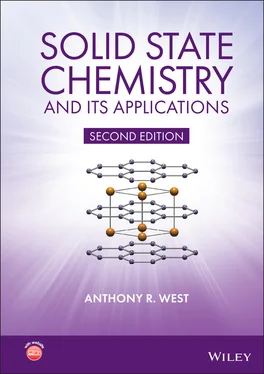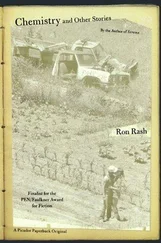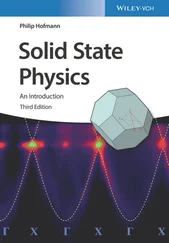1.17.7.10 Mixed anion perovskites: oxynitrides and oxyfluorides
The oxide O 2−, nitride N 3−and fluoride, F −ions are of similar size and can readily substitute for each other in crystal structures, other although the number of mixed anion systems that have been studied and reported in the literature are far fewer than those of mixed cation‐based materials. The reasons for this are that first, oxynitrides do not usually have the same thermal stability as corresponding oxides since metal‐oxygen bonds are usually stronger than metal‐nitrogen bonds. Controlling the N stoichiometry presents difficulties during synthesis if N 2gas is lost in an ‘open’ reaction. Second, the synthesis of oxyfluorides requires stringent safety precautions if F 2gas is involved.
A range of oxynitride perovskites are known with a 2:1 ratio of O:N and an overall cation charge of 7+. These include II/V cation charge combinations in ATaO 2N: A=Ca, Sr, Eu and III/IV combinations in ATiO 2N: A=Ce, Pr, Nd. Oxynitride perovskites with a 1:2 ratio of O:N form, such as LaTaON 2and EuWON 2.Given the similar sizes but different valencies of O 2−and N 3−, there is also much scope for the preparation of non‐stoichiometric oxynitrides that have variable O:N ratios together with different cation combinations, including mixed valence cations, to maintain charge balance.
O and N are either disordered or ordered, fully or partially, in these perovskites and similar tilted or distorted structures occur to those found in oxide perovskites. For instance, LaZrO 2N, Ca(Ta,Nb)O 2N and NdTiO 2N adopt the GdFeO 3structure with tilt system a + b − b −, whereas LaTiO 2N adopts the a − b − c −tilt system. In ordered 2:1 oxynitrides such as Sr(Nb,Ta)O 2N, the [(Nb,Ta)O 4N 2] octahedra show strong preference for a cis arrangement of the two N positions. Each N forms a linear B‐N‐B segment in the linkage of corner‐sharing octahedra; additional bonding interactions involving the transition metal d orbitals are believed to be responsible for the commonly observed cis configurations.
Oxide perovskites exhibit a very wide range of electrical, magnetic and optical properties and these may be modified by substitution of N for O in oxynitrides. The property modifications are associated with the lower electronegativity of N than O which leads to (i) more covalent metal‐nitrogen bonds compared with the more ionic metal‐oxygen bonds and (ii) a consequent reduction in the band gap of oxynitrides and nitrides. The band gap is frequently in the visible part of the electromagnetic spectrum and can be fine‐tuned by adjusting the O:N ratio, leading to a range of brightly coloured materials with applications as non‐toxic pigments and in visible light, photocatalytic water‐splitting processes.
A similar story can be told for oxyfluoride perovskites. The ones prepared so far have large A‐site cations, especially Ca, Sr and Ba, exhibit various tilted structures and the possibility of variable O:F ratio, especially in fluorinated cuprate phases that exhibit superconductivity.
1.17.7.11 Hexagonal perovskites
Hexagonal perovskites form when the tolerance factor is somewhat greater than unity. This is summarised schematically in the structure – field map, Fig. 1.42(f), in which A and B cation radii form the two axes. The crossover between different phase fields is not a rigid boundary, but is also a rich source of polymorphic structures, such as shown by BaTiO 3which exhibits both hexagonal and cubic perovskite polymorphs at temperatures above and below about 1450 °C, respectively.
The cubic perovskites considered so far may be regarded as layer structures in which cp AO 3layers are arranged in a ccp stacking sequence. Hexagonal perovskites also contain cp AO 3layers in which A is usually Ba, but the stacking sequence is either hcp or a more complex structure with a combination of ccp and hcp stacking. A useful and simple nomenclature to describe these mixed stacking sequences is to label a particular AO 3layer according to whether, in combination with the layers on either side, the local arrangement is hcp or ccp . Thus, if the layers on either side are in a similar position, the sequence is labelled h but if the layers to either side are in different positions, it is labelled c .
A major, and significant, difference between structures containing ccp and hcp anions concerns the relative positions of available tetrahedral and octahedral sites for occupancy by cations. In an hcp anion array, the octahedral cation sites form face‐sharing columns in one direction, as shown by NiAs, giving rise to short metal‐metal distances across the shared faces (and metallic bonding in NiAs). Face‐sharing of octahedral sites does not usually occur in ionic structures unless there is some kind of positive bonding interaction between the cations involved. In cubic perovskite, by contrast, the BO 6octahedra are well‐separated and share corners since only ¼ of the available octahedral sites that are suitable for cation occupancy have oxygen at all six corners (however, in a ccp structure such as rock salt in which all octahedral sites are occupied by cations, the octahedra share edges, Fig. 1.32).
Hexagonal perovskites form because their tolerance factor has a value greater than unity which means that, in a corresponding cubic perovskite, the B–O bonds would be somewhat elongated, as in Fig. 1.41(h). There is, therefore, a competitive energy balance between having either elongated B–O bonds or reduced B–B distances respectively, in the cubic and hexagonal perovskite structure types. The balance can be tipped in favour of one or other structure by either changes in temperature or doping, as observed with BaTiO 3in which either increased temperature or certain dopants lead to a transition from a cubic to a hexagonal structure.
The short metal‐metal distances in hexagonal perovskites appear to be facilitated by positive bonding interactions involving the d electrons of the transition metal B cations that act to counteract the effects of cation‐cation charge repulsion. The common occurrence of polytypism in the family of hexagonal perovskites, with mixed h,c stacking sequences of the AO 3layers, can be related to the formation of localised metal‐metal pair interactions. Strictly, the term polytypism refers to different stacking arrangements for the same composition (such as found with the many stacking sequences shown by silicon carbide) but here, it is convenient to use the term to allow compositional differences as well since there is a very large family of hexagonal perovskite compositions that are characterised mainly by different stacking sequences. Two other ways which illustrate reduced cation‐cation repulsions are observed in (i) structures that contain a low valence cation in some of the B sites, as in Ba 4Nb 3LiO 12and (ii) structures with some B site vacancies, as in Ba 5Ta 4O 15.
The simplest hexagonal perovskite structure is that of BaNiO 3which is entirely hcp . It contains infinite chains of face‐sharing NiO 6octahedra running perpendicular to the BaO 3layers, with Ni in the 4+ valence state. An [001] projection of four unit cells is shown in Fig. 1.42(g). Two face‐sharing octahedra form the repeat unit along the c cell edge; the octahedra are highlighted at the right hand side in (g) and shown from a different perspective in (h) together with some of the Ba atoms that form the cp BaO 3layers. Other oxides that have a similar structure with h stacking of layers are BaMnO 3, BaCoO 3and SrCoO 3.
Читать дальше












